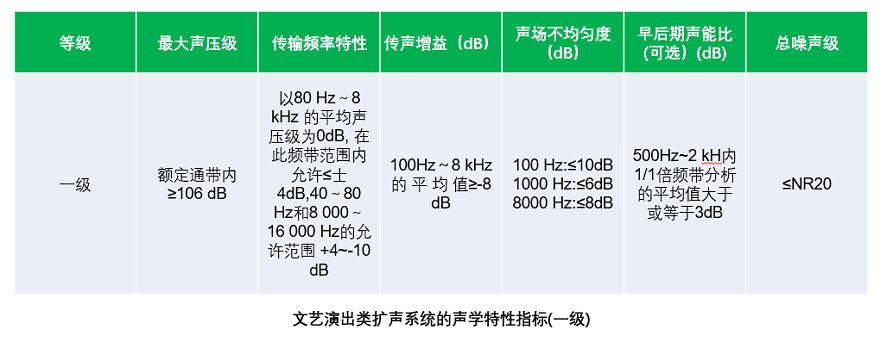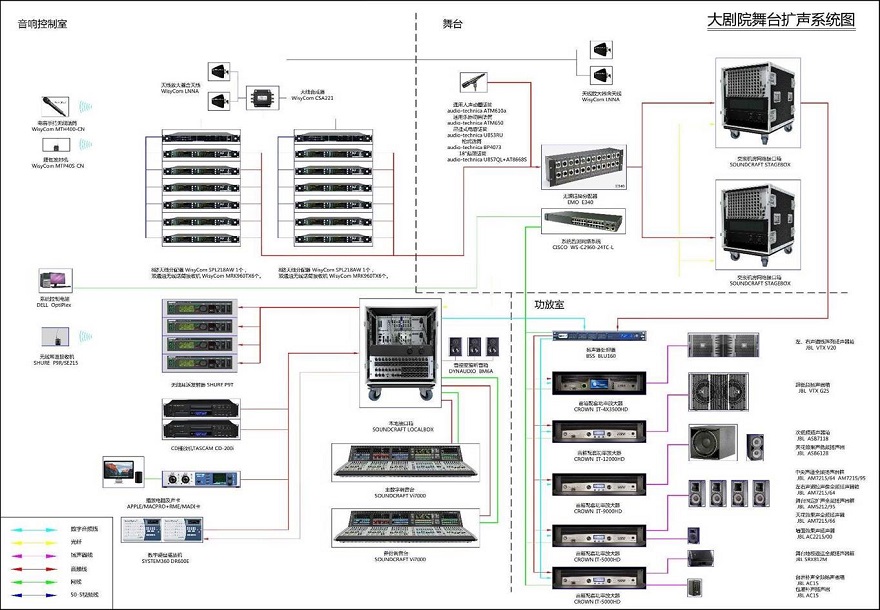Stage Sound Reinforcement Design
Classification of sound reinforcement engineering:
Due to the different acoustic environments and usage functions of various types of sound reinforcement projects, their acoustic characteristic indicators and functional requirements for the system are also not the same. For example, professional cultural performance systems and conference amplification systems have different requirements for the technical specifications, installation methods, sound characteristics, and settings of equipment such as microphones, speakers, amplifiers, and mixing consoles.
Design ideas and concepts for sound reinforcement systems:
The sound reinforcement system design should fully reflect the foresight, progressiveness, scientificity, safety, reliability, practicality and characteristics of the times of the scheme. For some theaters, we should pay full attention to the use needs of "international integration". Based on the functional positioning of the theater, targeted system design should be provided to reflect different styles and characteristics. The established sound reinforcement system provides a fully functional, well-equipped, and modern means of use for performing arts.
Acoustic characteristic indicators of sound reinforcement system:

The main functions of the theater sound reinforcement system are:
As a multifunctional theater with multiple specialties, its sound quality design is quite important. Although sound quality design belongs to the category of architectural acoustics design, these indicators include loudness, clarity, reverberation time, surround feeling, and familiarity. The main functions of the sound reinforcement system in a theater are:
(1) Improve language clarity and music clarity;
(2) Expand dynamic range (when the sound source power is insufficient);
(3) Improve the sound balance between different positions (dialogue, singing, and instrumental music) during performances (correctly operate the sound amplification system);
(4) It should have good sound reproduction characteristics (there should be no sensation of "electroacoustic" when using electroacoustic); Modify or produce specific effects on human voice and instrument sound according to artistic creation requirements;
(5) Should have accompaniment music for replaying musical plays without band accompaniment; Partial program signals can be stored and pre programmed to simplify technical operations;
(6) It can pick up and record live programs, as well as provide live audio signals for broadcasting or television broadcasts.
Sound reinforcement system design and construction:
Sound reinforcement belongs to the category of applied acoustics, and whether indoors or outdoors, it cannot be separated from the acoustic environment (or sound field) in which it is used. As for indoor sound reinforcement, people often control and improve the sound quality of the room through building sound and electroacoustic design.
Sound field design:
The goal of sound reinforcement system design is to achieve the best sound reinforcement effect with the simplest system structure, reliable working mode, and simple operation and maintenance. The main issues that need to be addressed in the design of a sound reinforcement system include: sound field design (sound quality control, sound image localization, language clarity, sound field uniformity, etc.), system configuration, and sound quality evaluation.
Sound field design principles:
Based on the architectural drawings and system usage, first establish the sound supply method for the speaker system. The commonly used installation and layout methods for speakers currently include: centralized, partitioned, decentralized, and combined centralized and decentralized. Regardless of the installation layout method used, the following principles should be followed:
(1) Determine the appropriate reverberation time based on the purpose of the hall; Provide reasonable suggestions based on the results of EASE simulation;
(2) Determine the sound pressure level data according to national standards and select the corresponding speaker products;
(3) The speaker system should be able to evenly cover the entire audience area;
(4) The arrangement of speakers should be conducive to improving sound clarity;
(5) Consistent audio-visual direction, natural sound perception;
(6) Beneficial for improving sound transmission gain;
(7) The maximum sound pressure level should meet the overall technical requirements;
(8) The time difference for the sound emitted by each speaker to reach the audience area should be less than 5-30ms;
(9) Easy to install, debug, and maintain.


EASE electroacoustic engineering simulation design software:
With the development of computer technology, the complex calculation work of sound field design for halls based on classical formulas has been replaced by EASE computer-aided design software.
By using EASE Electro Acoustic Simulator for Engineers 4.0 or above for sound field design calculations, one can intuitively see the expected acoustic characteristics and effects of the sound reinforcement system, understand the sound absorption situation of the hall, provide frequency response curves for reverberation time, distribution curves for consonant clarity loss rate, distribution curves for fast language transfer index, total sound pressure level distribution curves for 7 frequency bands, speaker selection, placement position, angle, and other related data.


Tel:010-8538 3866
Address:Building 35, No.1 Headquarters,Tongzhou District, Beijing
WebSite:https://www.jindonggaoke.com/
Copyright 2018 北京金东高科科技有限公司 All Rights Reserved. 北京领助科技有限公司提供技术支持 京ICP备17042895号